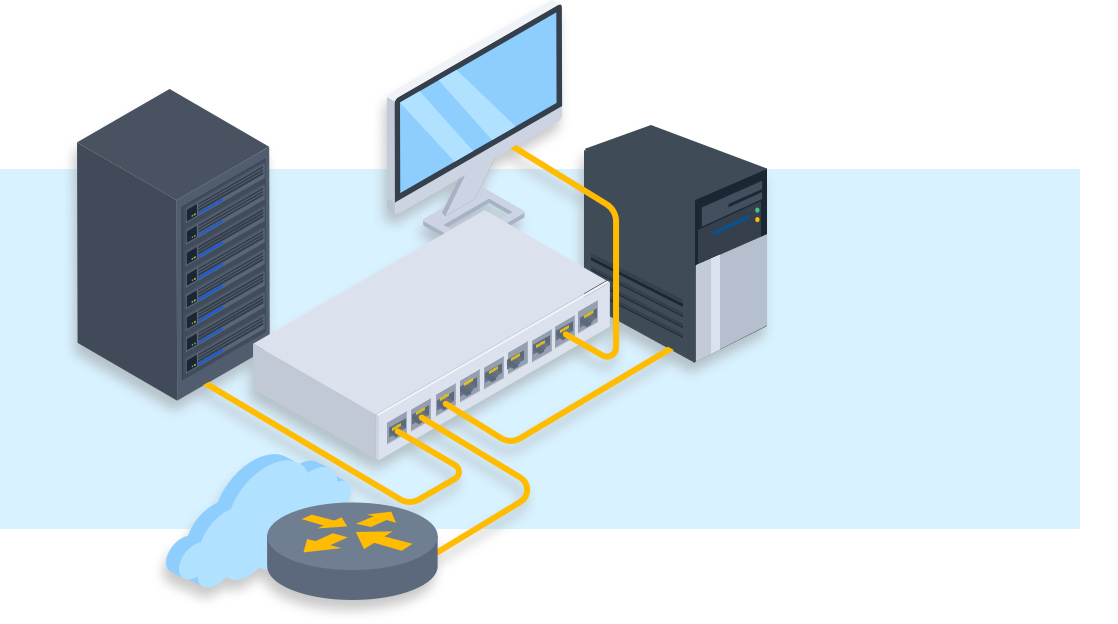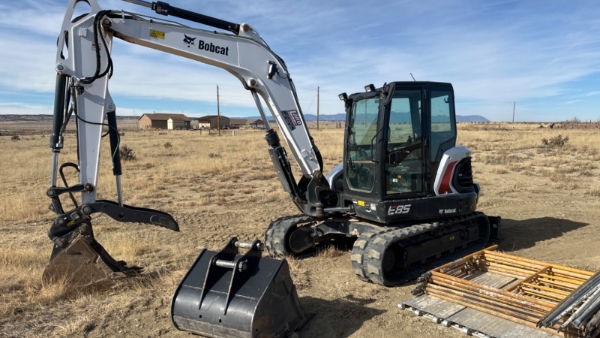The Role of Ethernet Switches in Modern Networking: Enhancing Performance and Efficiency
Understanding Ethernet Switching Basics
In today’s digital landscape, the role of an ethernet switch has become increasingly fundamental. It’s more than just a device for connecting multiple devices on a single network; it’s a critical component that ensures smooth data flow and efficient networks. Ethernet switches, which serve as central hubs in a local area network, determine the paths for data packets to travel and ensure that data reaches its intended destination without delay, thereby reducing the risk of data collisions.
While many might confuse switches with routers, it’s crucial to distinguish between these two network devices. Unlike routers, which connect multiple networks and manage traffic, Ethernet switches facilitate communication within a single network. This makes switches indispensable for businesses seeking efficiency in internal communications. The precise function of switches in handling packet switching and data filtering underscores their pivotal role in optimizing network performance.
Types of Ethernet Switches
Several kinds of Ethernet switches are designed to cater to specific networking needs. Managed switches offer extensive control and configuration options, ideal for enterprises that require advanced features such as VLANs and SNMP for network monitoring. These switches enable network administrators to prioritize traffic, establish redundant links, and monitor network performance more effectively. In contrast, unmanaged switches are straightforward, plug-and-play devices that are perfect for essential, small-scale networks that do not require complex configurations.
Then there are smart switches, offering a middle ground with some management features at a lower cost than fully managed switches. These are typically used in office environments where some level of network control is beneficial without the need for the comprehensive management capabilities that a fully managed switch provides. Selecting the correct type of switch depends on the network’s size, complexity, and security needs. Therefore, companies must thoroughly assess their requirements.
How Ethernet Switching Enhances Network Performance
Ethernet switches significantly enhance network performance. They reduce latency, the delay in transmitting data over a network, allowing faster data processing and response times. This is particularly beneficial in real-time application environments, such as gaming and video conferencing, where delays can disrupt user experience. High bandwidth capabilities enable data packets to travel efficiently without bottleneck issues, which is crucial for operations that rely on high-speed data transfer, such as video streaming and large file transfers. According to Network World, high-speed Ethernet switches remain a key growth area in networking as businesses and service providers increasingly prioritize faster and more efficient data transmission.
One additional benefit of Ethernet switching is the efficient control of data flow. By dividing the network into several collision domains, switches reduce unnecessary data traffic, improving overall performance and network efficiency. This division optimizes bandwidth utilization, ensuring that demanding applications receive the necessary resources without compromising the performance of other network tasks.
Energy Efficiency and Cost-Effectiveness
In addition to improving performance, Ethernet switches also enhance energy efficiency, thereby reducing operational costs. Current switches include Energy Efficient Ethernet (EEE), which reduces energy consumption during periods of minimal data traffic. This can significantly reduce electricity expenses, making it a wise investment for companies seeking to control operational costs effectively.
Implementing these energy-saving switches during network upgrades can significantly lower a company’s energy consumption. This aligns with sustainability goals, which are gaining importance as businesses increasingly prioritize eco-friendly practices. Ethernet switches support corporate sustainability initiatives by reducing energy usage and play a role in broader efforts to minimize environmental impact across industries.
Security Features of Ethernet Switching
Ethernet switches’ security features are vital in protecting network integrity. Features like Virtual Local Area Networks (VLANs) provide logical separation between different network segments, enhancing security by controlling data flow. Moreover, advanced managed switches offer monitoring tools that enable real-time network health assessments and potential threat warnings.
Robust security utilizing Ethernet switches is crucial in environments where sensitive data is transmitted, such as financial institutions and healthcare facilities. These features ensure that only authorized devices access certain network parts, adding an extra layer of security. Additionally, Ethernet switches’ capability to monitor and log access data helps maintain compliance and ensure quick responses to potential security breaches.
Real-World Applications of Ethernet Switches
Ethernet switches find applications across diverse industries. In healthcare, they facilitate seamless communication between medical devices and information systems, ensuring the timely availability of patient data for improved healthcare delivery. In education, switches facilitate smart classrooms by enhancing connectivity for digital learning tools, promoting an interactive learning environment.
Ethernet switches benefit corporate environments by maintaining efficient office networks that support a wide range of collaborative tools. A case study in the tech industry demonstrated how upgrading switches led to significant productivity enhancements by reducing network downtime and improving data-sharing speeds. In manufacturing, switches enable real-time tracking and automation processes, increasing efficiency and reducing error rates.
The Future of Ethernet Switching Technology
The evolution of Ethernet technology is far from static. As new technologies emerge, switches will integrate with Internet of Things (IoT) devices and 5G networks, further enhancing their capabilities. Integrating Ethernet switches with IoT will facilitate improved connectivity and data management from home automation systems to smart city infrastructures.
Industry predictions indicate that the proliferation of smart devices will drive demand for even more sophisticated Ethernet switches, making them a cornerstone of future-ready IT infrastructures. As companies continue to advance with technological innovations, the versatility and performance of Ethernet switches will become increasingly essential in handling more complex networks.
Conclusion: Ethernet Switches as a Cornerstone of Modern Networking
In summary, Ethernet switches play a pivotal role in the current networking landscape. From improving performance to providing robust security and promoting energy efficiency, these devices will remain integral to networking strategies worldwide. For businesses, upgrading to more sophisticated switch solutions is not just an option but a necessity to stay competitive in a rapidly advancing digital era.
Gaining a deeper understanding of Ethernet switches enables organizations to enhance their strategic planning and adapt to evolving networking demands, ensuring sustained productivity and connectivity. As networking needs continue to grow, Ethernet switches will undoubtedly remain an essential component of technological progress.
Keep an eye for more latest news & updates on Dgmnewscom!






